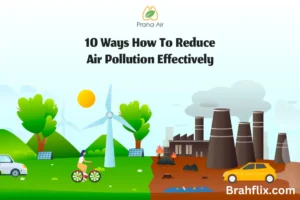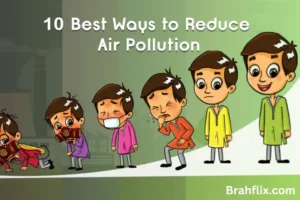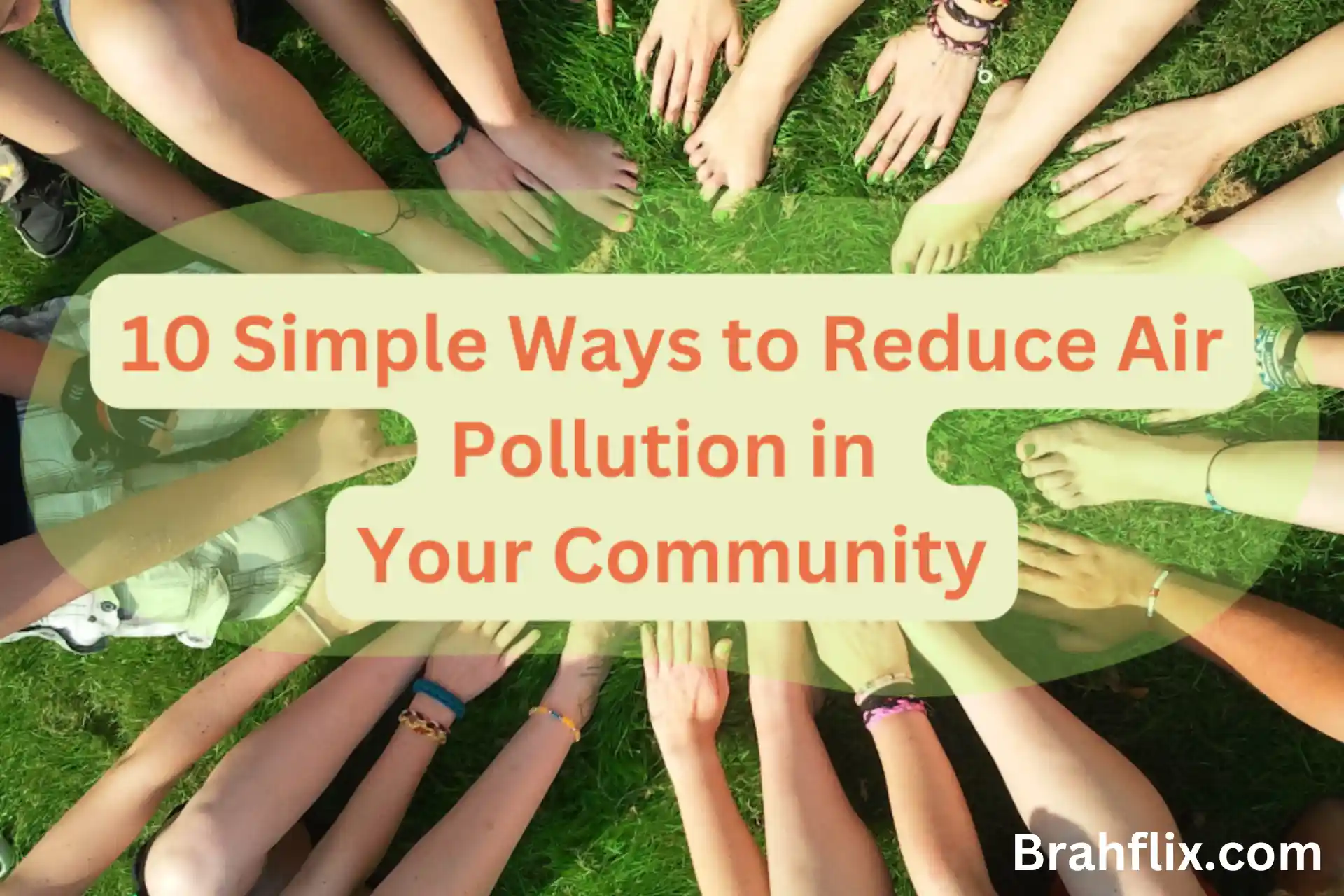Introduction
Air pollution is one of the most pressing environmental issues of our time. With urbanization, industrialization, and increased vehicle emissions, the air quality in many cities has deteriorated significantly. According to the World Health Organization (WHO), 7 million people die each year due to air pollution-related diseases. This staggering statistic emphasizes the urgent need for effective strategies to combat this issue.
In this article, we will explore 10 ways to reduce air pollution, providing practical solutions that individuals, communities, and governments can implement. By adopting these measures, we can all contribute to cleaner air and a healthier planet.
Key Takeaways
- Air pollution causes 7 million premature deaths annually.
- Implementing community-driven initiatives can significantly reduce pollution levels.
- Small changes in daily habits can lead to major improvements in air quality.
1. Promote Public Transportation
One of the most effective ways to combat air pollution is to promote public transportation. According to the American Public Transportation Association (APTA), public transit use can reduce greenhouse gas emissions by up to 45 million metric tons annually. Here’s how to encourage its use:
- Increase Accessibility: Improve the availability of public transit options to make them more convenient for users.
- Reduce Fares: Lowering costs can incentivize more people to choose public transportation over personal vehicles.
- Awareness Campaigns: Educate the public about the environmental benefits of using public transit.
Statistics Show: A study by the Victoria Transport Policy Institute found that a 10% increase in public transit ridership can lead to a 4% reduction in vehicle emissions.
Benefits of Public Transportation
- Reduced Traffic Congestion: Fewer cars on the road lead to less congestion.
- Lower Fuel Consumption: More public transit means less fuel usage overall.
- Community Engagement: It fosters community interaction and reduces isolation.
2. Encourage Carpooling and Ridesharing
Carpooling and ridesharing are effective strategies to reduce the number of vehicles on the road, thereby cutting down on emissions. Implementing carpooling initiatives can have substantial environmental benefits.
Tips for Successful Carpooling
- Establish Networks: Create apps or platforms that connect drivers and passengers.
- Incentivize Participation: Employers can offer incentives like preferred parking for carpoolers.
- Promote Safety: Assure potential users about safety measures.
Fact: Carpooling can save up to 1.5 billion gallons of gasoline annually, translating to a significant reduction in air pollution.
3. Adopt Renewable Energy Sources
Transitioning to renewable energy sources such as solar, wind, and hydroelectric power is essential for reducing air pollution. Traditional energy sources like coal and natural gas release significant amounts of carbon dioxide and other pollutants into the atmosphere.
How to Make the Switch
- Government Policies: Support legislation that promotes renewable energy incentives.
- Individual Action: Invest in solar panels or choose green energy providers.
- Community Initiatives: Organize local groups to promote wind or solar projects.
Statistics: The International Energy Agency (IEA) reports that increasing the share of renewables can reduce air pollution-related health risks by 90% by 2040.
4. Increase Energy Efficiency
Improving energy efficiency in homes, businesses, and industries can significantly reduce the demand for energy, thus cutting down on pollution.
Practical Steps for Energy Efficiency
- Home Improvements: Use energy-efficient appliances and LED lighting.
- Industrial Upgrades: Encourage factories to adopt cleaner technologies.
- Public Awareness: Promote energy conservation campaigns.
Data Insight: The U.S. Department of Energy states that improving energy efficiency could lead to a reduction in greenhouse gas emissions by up to 50% by 2030.
5. Implement Green Spaces
Urban areas often suffer from poor air quality due to a lack of greenery. Green spaces such as parks and community gardens can help absorb pollutants and improve air quality.
Strategies for Creating Green Spaces
- Community Projects: Involve local residents in creating and maintaining green areas.
- Urban Planning: Encourage city planners to integrate parks into urban designs.
- Support Local Flora: Plant native species that are known to thrive in local climates.
Research Suggests: A study published in the Environmental Health Perspectives found that urban greenery can reduce air pollution levels by up to 30%.
6. Reduce Indoor Air Pollution
Many people overlook indoor air quality, which can be just as harmful as outdoor pollution. Sources of indoor pollution include mold, dust, and chemicals from cleaning products.
How to Improve Indoor Air Quality
- Ventilation: Ensure proper ventilation in homes and workplaces.
- Use Natural Cleaners: Opt for eco-friendly cleaning products.
- Regular Maintenance: Keep HVAC systems clean and well-maintained.
Tip: The Environmental Protection Agency (EPA) recommends using air purifiers with HEPA filters to capture harmful particles.
7. Advocate for Policy Changes
Government policies play a crucial role in combating air pollution. Advocating for stricter regulations and sustainable practices can lead to significant improvements.
Ways to Get Involved
- Join Advocacy Groups: Engage with organizations focused on environmental protection.
- Contact Representatives: Write to local officials about the importance of air quality initiatives.
- Participate in Local Meetings: Attend city council meetings to voice concerns and propose solutions.
Insight: Policies aimed at reducing emissions from vehicles and industries can lead to a 40% reduction in air pollution by 2040.
8. Support Sustainable Agriculture
Agricultural practices contribute to air pollution through the use of fertilizers, pesticides, and fossil fuels. Supporting sustainable agriculture can help mitigate these effects.
Sustainable Practices to Encourage
- Organic Farming: Promote the use of organic methods that reduce chemical use.
- Local Markets: Support local farmers who practice sustainable methods.
- Education Programs: Provide resources to educate farmers about eco-friendly practices.
Data: A report from the Food and Agriculture Organization (FAO) states that sustainable farming can reduce greenhouse gas emissions by 20-30%.
9. Engage in Community Clean-Up Efforts
Community engagement is vital for raising awareness and actively working to improve air quality. Organizing clean-up events can foster community spirit and promote environmental responsibility.
Organizing a Clean-Up
- Identify Areas in Need: Focus on parks, streets, and waterways.
- Create a Schedule: Plan regular events to maintain momentum.
- Promote Participation: Use social media and community boards to invite volunteers.
Quote: “Many hands make light work.” — John Heywood. Engaging the community can amplify efforts and create lasting change.
10. Educate and Raise Awareness
Education is a powerful tool in the fight against air pollution. Raising awareness about its causes and effects can motivate individuals and communities to take action.
Strategies for Effective Education
- Workshops: Host events to educate the public about air quality.
- Social Media Campaigns: Use platforms to share information and resources.
- School Programs: Integrate environmental education into school curriculums.
Fact: Research shows that communities that prioritize environmental education see a 25% increase in eco-friendly behaviors.
Frequently Asked Questions (FAQs)
1. What are the main sources of air pollution?
Air pollution primarily comes from transportation, industrial emissions, agriculture, and household activities.
2. How can individuals make a difference?
Individuals can reduce air pollution by using public transportation, carpooling, and adopting energy-efficient practices.
3. What role do governments play in reducing air pollution?
Governments can enact regulations, promote renewable energy, and support public transportation initiatives.
4. Are there health risks associated with air pollution?
Yes, air pollution is linked to respiratory diseases, cardiovascular problems, and premature death.
5. How does climate change relate to air pollution?
Climate change exacerbates air quality issues, as rising temperatures can increase the formation of ground-level ozone.
Conclusion
Reducing air pollution is a collective responsibility that requires commitment from individuals, communities, and governments alike. By implementing the 10 ways to reduce air pollution discussed in this article, we can create a cleaner and healthier environment for current and future generations.
Have you considered how you can contribute to reducing air pollution in your daily life? We encourage you to explore our other blogs for more tips and insights on environmental sustainability and health. Together, we can make a difference!


